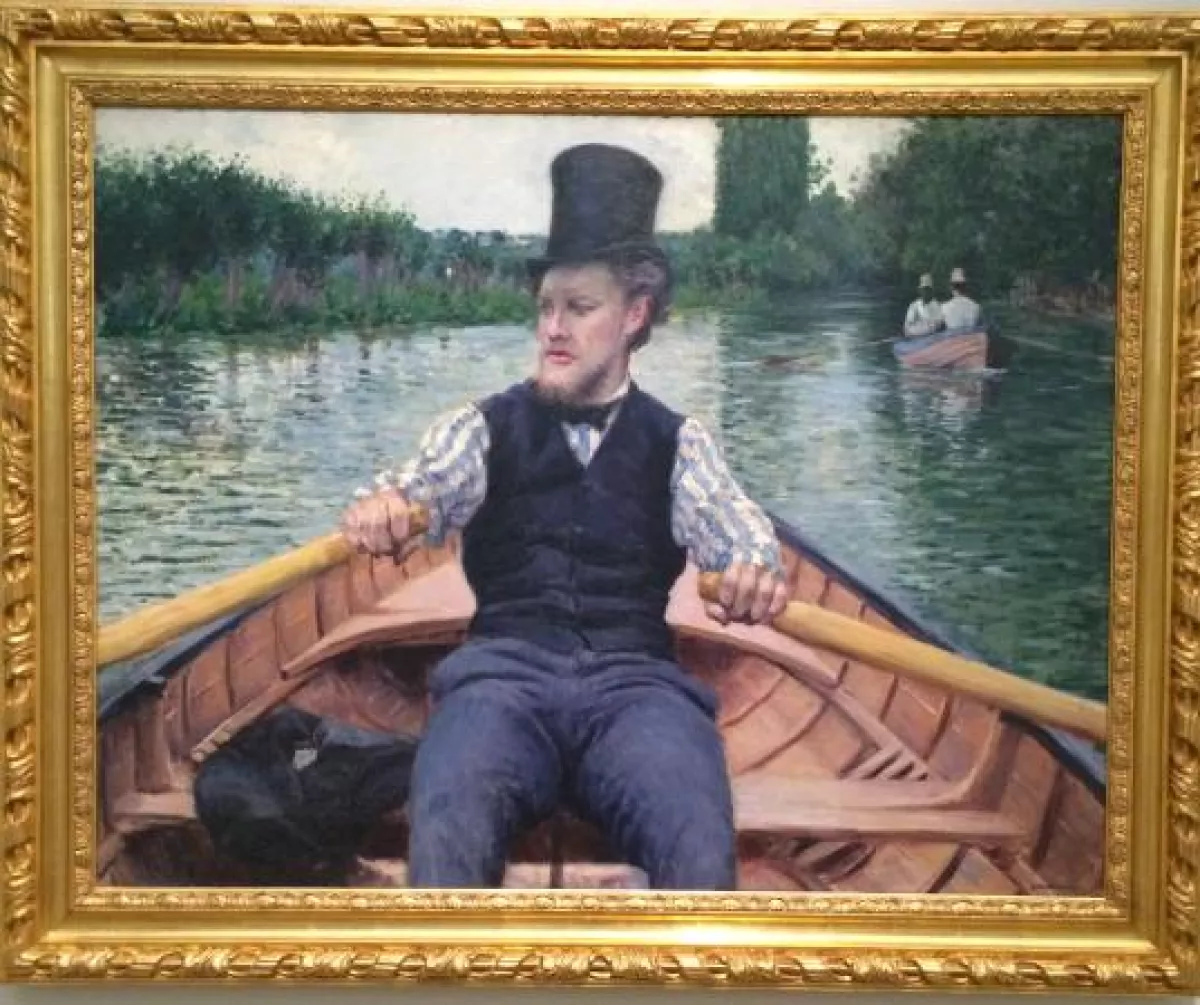French impressionism, Louis Vuitton and tax cuts B line between philantrophy, corporate greed
Back in January 2023, the famed Musée d’Orsay in Paris secured La Partie de bateau (The Boating Party), an 1877 painting by Gustave Caillebotte, a key but long-underappreciated figure of the art school of Impressionism.
Once dismissed as minor, the painting is now celebrated for its energy and modern spirit, reflecting how Caillebotte’s reputation has dramatically risen in recent decades. This new prestige, however, has also placed his work within the high-stakes art market, where record-breaking sales and questions of public versus private ownership loom large.
The sale price of The Boating Party was €43 million, a staggering figure compared to the Musée d’Orsay’s modest €3 million annual acquisitions budget.
The French Ministry of Culture recognized the painting as a “national treasure,” with an article by Le Monde recalling that it even prevented its export for 30 months, but failed to provide funds for its purchase. To avoid losing the work to private collectors, the museum launched a sponsorship appeal with an extraordinary incentive: donors could deduct 90% of the painting’s cost from their taxes.
The luxury group Louis Vuitton Moët Hennessy (LVMH), already a patron of the museum, quickly stepped in. Its acquisition, heavily publicized, allowed the company to burnish its image as a cultural benefactor.
Yet the arrangement sparked controversy: with the tax deduction, French taxpayers effectively funded the vast majority of the purchase, while LVMH enjoyed positive publicity at minimal cost. According to an article published on The Conversation, critics argue that such patronage is less altruism than corporate strategy, reinforcing a donor’s influence within cultural institutions.

Ethical conflict behind mixing cultural preservation with corporate PR
This was not the first time LVMH and its chief shareholder, a central figure of France’s elite Bernard Arnault, have leveraged cultural philanthropy. The 2003 Aillagon law, designed to encourage corporate support for the arts, has repeatedly benefitted the company.
When the Louis Vuitton Foundation building opened in 2014, LVMH was able to deduct 60% of construction costs from its taxes, amounting to €518 million. That year alone, the foundation’s tax breaks represented 8% of the nation’s total, sparking parliamentary limits on the law.
Similarly, following the 2019 Notre Dame fire, LVMH’s €200 million pledge – double the sum offered by French rival luxury group Kering, which holds brands such as Gucci and Yves Saint Laurent– was widely criticized as a publicity move.
Arnault defended himself, noting that in other countries he might have been praised rather than condemned, but the incident underscored the competitive and reputational motives often underpinning high-profile donations.

According to the article, the case of The Boating Party illustrates the complex intersection of art, money, and influence. On one hand, the acquisition kept a major Impressionist work in France and made it accessible to the public. On the other, the financial mechanics behind it highlight how cultural heritage can become entangled with corporate image-making and taxpayer subsidies.
For LVMH, the sponsorship was a textbook exercise in strategic philanthropy: a relatively small outlay compared to its €80 billion annual turnover, yielding immense cultural prestige.
Once acquired, the painting was treated like a cultural superstar. It embarked on an unusual tour of French museums, drawing attention well beyond the walls of the Musée d’Orsay. At one stage, curators even considered transporting it along rivers by boat, in a nod to its subject.
While the plan was abandoned for security and cost reasons, the story of its crate – usually specially designed to shield the canvas from damage and public exposure – added another layer of spectacle as Louis Vuitton suggested to use one of its world-famous trunks with the brand’s monogram all over it for transport, a gesture that would have further tied the company’s brand to the painting. Ultimately, museum officials chose practicality over publicity, sending the work by traditional means.
The journey of Caillebotte’s The Boating Party reveals how art can serve as both cultural treasure and corporate asset, with the author pointing out that the example draws attention to the blurred line between philanthropy and self-promotion.
Because of the huge tax deductions involved, it is worth asking: who actually pays for these “gifts to the nation,” and who truly benefits from them?
By Nazrin Sadigova








